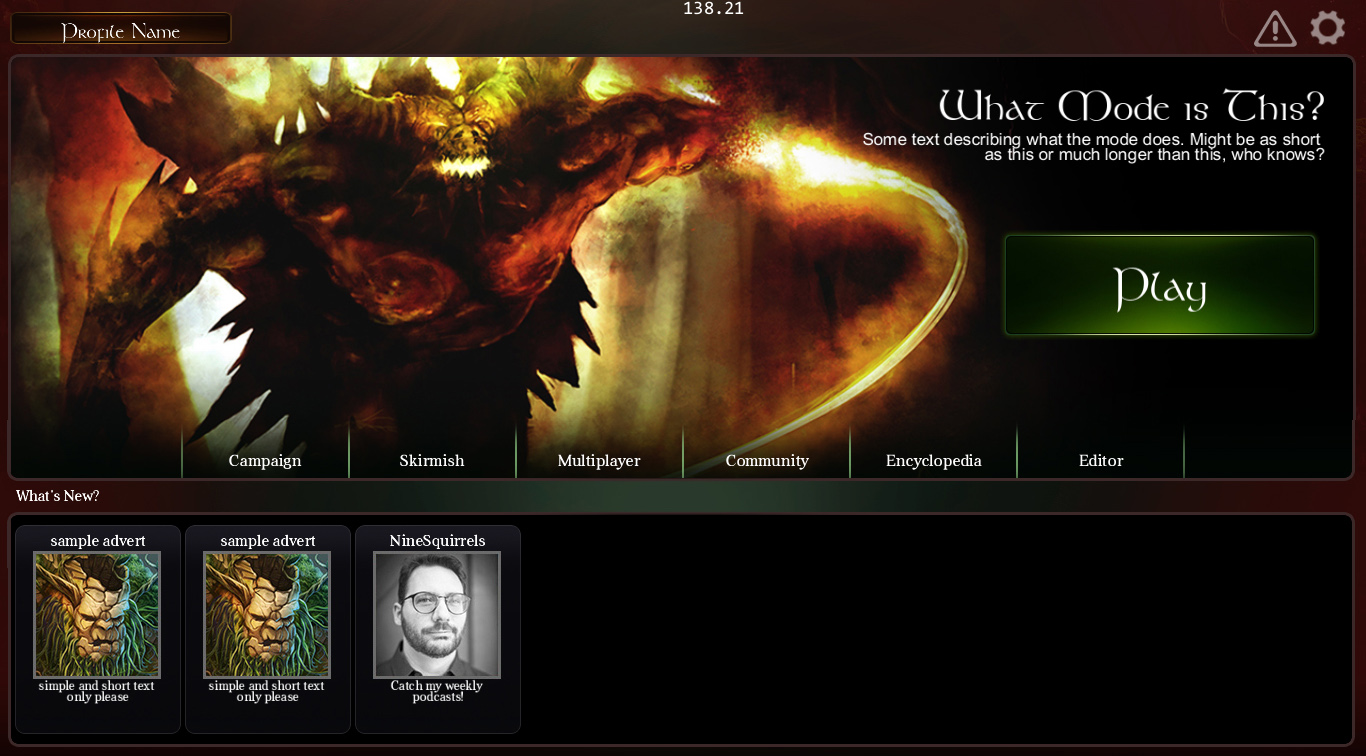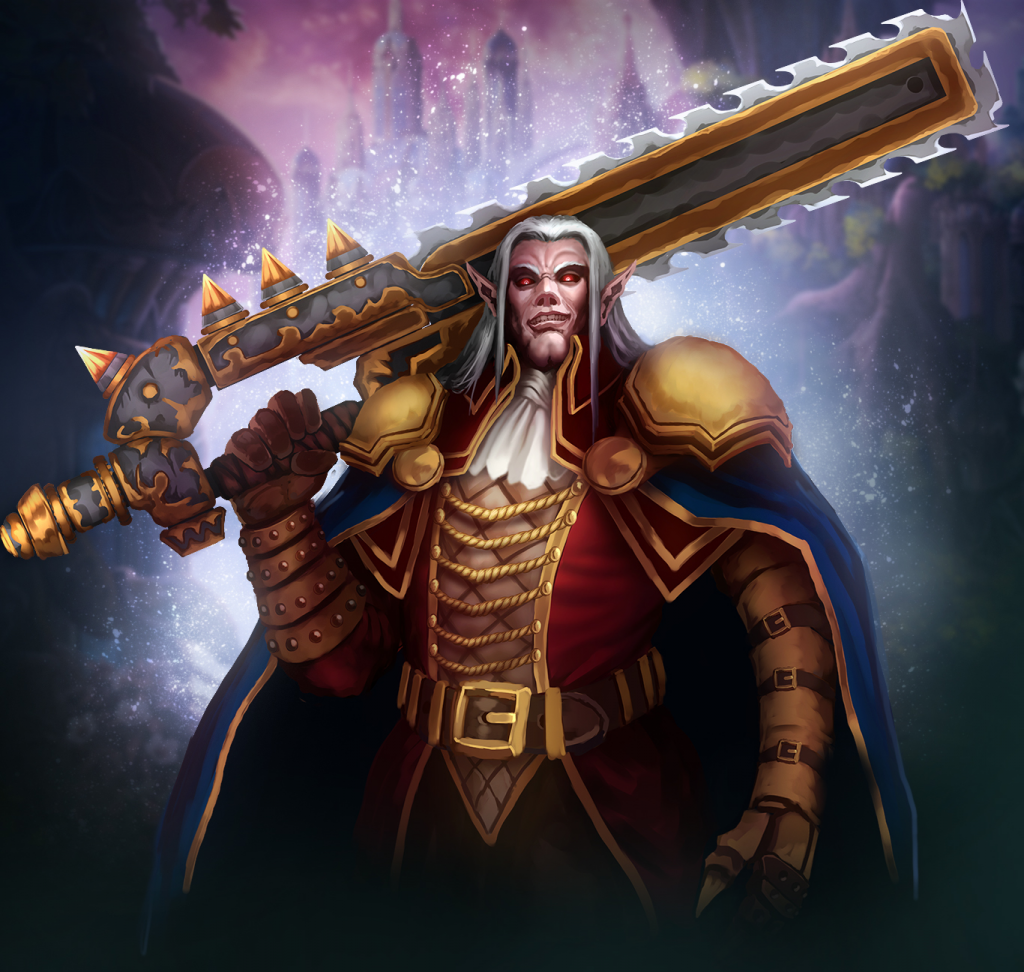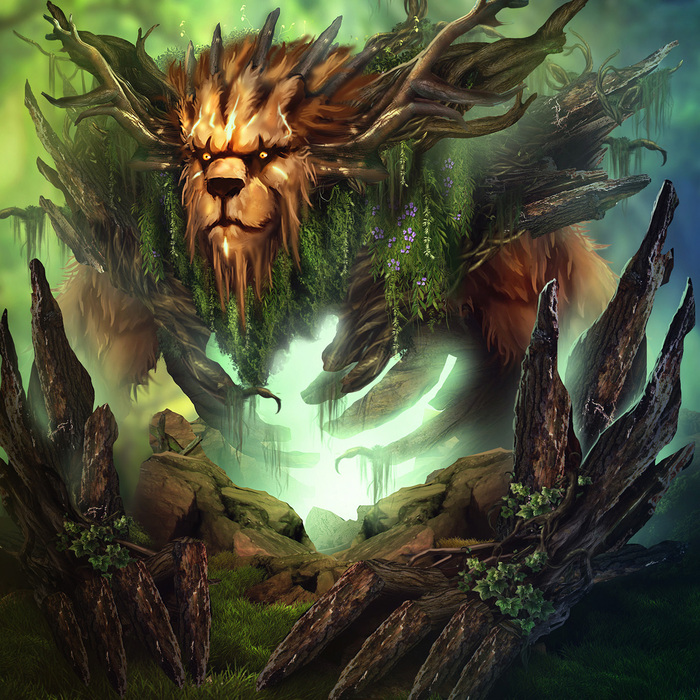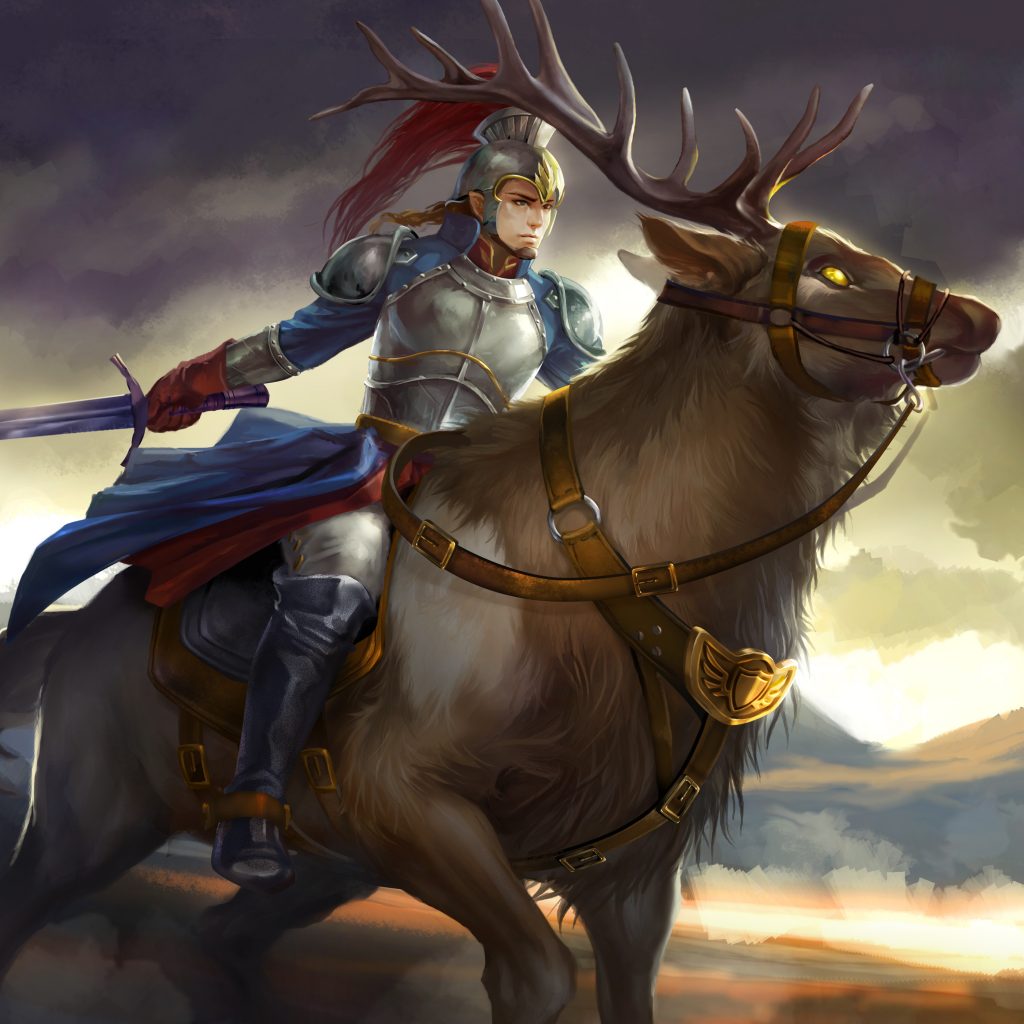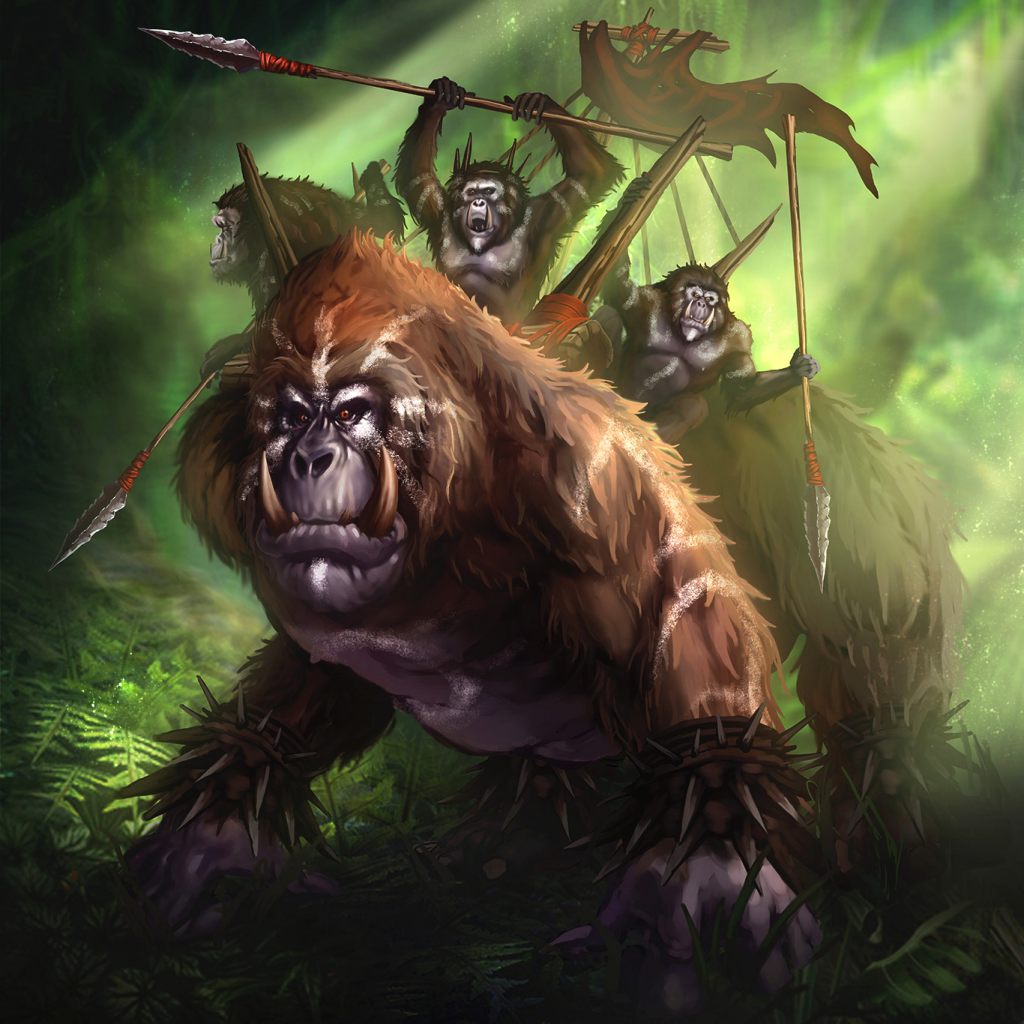boomzap
Boomzap joined
Boomzap Entertainment is a casual games developer and publisher in Southeast Asia. Founded in 2005, Boomzap has developed and released over 40 titles on various platforms such as PC, Mac, Wii, iPad, iPhone and Android.
In the past week we’ve started getting more questions about how Last Regiment is going and what plans we have for the game, so for today’s stream we first did a little Q&A session. We even answered questions not specific to this game such as “Why do game developers do stupid things?”
Then we showed some of the new art we made for the maps, such as bigger and more interesting tiles for the blocker features (non-walkable tiles), instead of adding several small tiles.
That way the hex shapes are not too obvious when you look at the map on a whole.
It may not look like huge progress, but it’s really a process we need to spend much time on. We want to make sure we create some pretty looking maps, because screenshots are the first things that people are going to see at the download page. We want to make sure that we make a beautiful game from the very beginning.
We actually also made some progress for multiplayer mode. We tried it yesterday, and had wanted to stream it this week, but it’s still not ready. We’ll continue working on that and hopefully we can show that in the next stream.
By Christopher Natsuume
Let’s face it, conferences aren’t cheap. Hotels, flights, dinners… even a small 3 day show is quickly hundreds, if not thousands of dollars. When you factor in lost time for travel and preparation… You’re going to want to maximize the value of that commitment.
For this article, I am focusing on B2B conventions, where you are mostly interacting with other companies in your sphere of influence. Consumer-based conventions require different skills and strategies, but much of this will still be meaningful.
GO WITH A PLAN
Before you even get started, ask yourself “What would a successful convention look like for me?” Are you trying to get your demo to a publisher? Are you looking to sign clients up to use a new product? Are you looking for products to sell? If you don’t have a clear answer to this, don’t even bother going.
When you do have a clear answer, research how you’re going to measure that success. Number of signups? Dollar value of contracts signed? Now look at the shows available and ask yourself if the people you need to reach these goals are there. Different shows have different audiences, and you want to be at the right shows. Talk to people who have been to those shows. Look at old brochures and websites. Make sure they have what you want before you even start planning. Remember: Not going is still an option at this point. If your research shows that you can’t make a valid business case for it, skip it.
TRAVEL SMART
If you are taking the time to go halfway around the world, don’t shortchange yourself. Get there early enough to deal with the jetlag. My trick is to get there a few days ahead, and make a mini-work-vacation out of it. Two nights of sleep will make you a new person, and buys you the time to schedule a few special visits with local companies in their offices before the show. If you plan in advance, you can usually manage at least one nice relaxed pre-show dinner with a local company, which is often more useful than the show itself.
For those with significant others… You’re paying for the hotel anyway. Having them come along and check out the city while you are conferencing it can be a great way to take some of the relationship-stress out of a travel-heavy lifestyle. Usually conferences are held on weekdays, so sticking around for a weekend after the show is a pretty easy sell for most companies, and buys you a really cheap mini-vacation.
If you are travelling far, it’s likely you’re flying through somewhere else to get to your conference. Most airlines allow cheap, or even free stopovers. On some airlines, adding a stopover in their hub city may even work out to a cheaper ticket – I’ve used this many times using Cathay Pacific through Hong Kong. If you have clients or partners in cities between you and the conference, you can often schedule a meeting there very cheaply, saving you travel and cost to go out there as a separate trip. Or, conversely, you can arrange to stop through a town you’d like to visit over the weekend on the way back – another way to score a cheap mini-vacation.
And don’t forget your miles! Use loyalty programs for airfare and hotel booking, and use the same credit card. Do a little research and figure out which airline group gets you to the shows you most frequently go to, and book through them every time. Over time, this will pay off.
RESEARCH AND PROMOTE
Your promotion efforts should start at least a month before the conference. Walk through your contact list and let them know you’ll be there. Post on social media. We even make themed images for Facebook for each conference: images get more attention in any social feed. Make sure to #hashtag the conference itself, for retweeting and promotion. This kind of blanket promotion is useful, but it’s only the start.
Your most effective promotion will be targeted, and will require some research. Take some time and look through old conference brochures. See who was there the last few years, or at similar conferences. Where are your competitors advertising and distributing? With a little bit of elbow grease, you can dig up a lot of names, and with only the most limited of LinkedIn skills, develop a lot of new contacts. Mail them directly to see if they are going to be there, and set up meetings. Protip: They don’t even have to be there. Most of them will give you a “Sorry, we’re not going to be at that show” message. No worries. “Sorry to hear you won’t be at the show, let’s set up a call the following week instead!” If their only reason for turning down the meeting was not being there… they just ran out of reasons to blow you off.
SCHEDULE EFFECTIVELY
Different people have different scheduling methods. All of them share one major point: Start early. Schedules fill up fast, and you’re going to want to get the top people in your list locked down as soon as possible. If the conference has some kind of meeting system, register at least one person from your studio early – this gets you in the meeting system, and available for other people to look up as they join the conference.
My actual scheduling method is simple: I start from 10 A.M. and fill in meetings on the hour until all the event hours are full for all days from 10 to 4. Then I go back and fill the half hour periods following the meetings I am less excited about, reserving full hours for the critical meetings, so we have the time if I run over. I leave 4:30 and after open, because sooner or later you’ll need to schedule impromptu meetings, and those are the most likely times that people will still have available late in the show. Try very hard to not take “Let’s get together sometime at the show” as an answer. Put that down in a schedule, or it won’t happen.
A side note: If you are on a schedule, show up or die trying. Every minute of a convention is critical, and when you skip a meeting, you’re wasting some of the most valuable time of someone’s month. Aside from the fact that this is a douchey thing to do, it’s going to be remembered. There is a special place on my shit list for someone who schedules a 9 A.M. meeting with me and then blows it off. Most people aren’t given the opportunity to do that to me twice.
GET THE BOOTH
For years I spent every show running back and forth across the show, wasting 5-10 minutes between each meeting not knowing where to go, looking for people, and missing god-knows-how-many meetings. Screw that noise. Every show has a “cheapest booth” option. It’s usually not too pricey, and for that you get comfy chairs and a table, a plug to make sure your laptop/phone are always powered, and a spot that everyone can find on the actual conference map. You’ll find every meeting is more relaxed, fewer meetings are missed, and you suddenly have 20% more time than you had before. As a side bonus, the chance of someone walking by, seeing you taking a meeting, and then knowing where to find you later is much higher. And that’s serendipitous power right there.
If you can’t get the booth (and you really should consider it), then next best is one single, memorable location that is close to the main show floor. Assume any coffeeshop, restaurant, bar, etc. near the show that you have not specifically reserved a space at will be full and unavailable. That being said, one company I knew called a bar next to a conference, and for a very small fee reserved a single table at the back of the bar for the entire show. Interesting move. It even came with free beer.
Note, you don’t have to go crazy decorating a booth at a B2B show. Nobody cares. A tablecloth with your logo, or a simple stand-up display poster of your games is more than enough. You’re going to be scheduling all of your meetings before the show anyway, so attracting people you don’t have meetings with is more likely counterproductive than helpful. I do find, however, that having an extra bunch of power plugs for the people I am meeting with to power their phones during my meetings does generate some positive vibes, as well as a couple boxes of Altoids or mints. Everyone wants mints at a conference.
COME PREPARED
First and foremost, make sure you have a working phone with power for the whole show. Bring extra cords. Bring power bricks. Do what it takes. If you are without a powered phone, you’re operating at a deep disadvantage. Assume the WiFi at a convention will be useless, and have data. If travelling overseas, get a calling plan with cheap overseas data, or invest in a dual-sim phone you can drop a spare prepaid data card in, and make it your first purchase when you arrive.
Make a slideshow. Keep it short, simple, and to the point. Use that in every meeting. Practice it before the show, and have it down. Put it on a tablet instead of a laptop, it’ll be lighter and the battery will last longer. If you are buying a new laptop, consider an ultralight 2-in-1 tablet/laptop for precisely this reason. Make a second version of it with a lot more text. When the show is over, this is your key followup material. But for the love of all that is holy, don’t be the guy who reads every slide out to someone in a meeting. People hate that guy.
Dress comfortable. You’re going to be on your feet all day, leave the heels at home. For the game industry, nobody takes anyone in a suit seriously. Dress casual, and leave the low cut tops, short skirts, muscle tees, etc. at home as well. Simple, classy, functional casual clothes will put the attention on you, and leave you comfortable enough to make it from a 9 A.M. breakfast to a midnight party without stopping, multiple days in a row. An extra sweater for cold conference rooms fits in any backpack, and will be a godsend.
You have absolutely no excuse to not have business cards at a conference. It’s rude and makes you look like an idiot. Even junior high kids in Japan have business cards. If you run out, Moo prints them in 24 hours and delivers to hotels. Absolute worst case, go to the hotel business center, print out a few pages on A4 paper and cut them out. Make sure you tuck 10 spares in your wallet in case you run out or lose the rest. If you really mess up and don’t have any cards, write your info out on your phone in a word doc or something, and have people take a picture of it. But… seriously, don’t be that guy.
The number one mistake people make for their health at a convention is getting dehydrated. If you’re in a place where tap water is safe, a simple water bottle is enough. Failing that a couple bottles of bottled water are a godsend. I usually bring a couple energy bars as well, for when I get too slammed to do a lunch, and need some energy. Forget the energy drinks – they have minimum value, and lead to big energy crashes later.
RETHINK LECTURES
Most conferences record the lectures. Conference lecture videos are what I watch when I eat breakfast for a week or two after the show, and it’s a far superior method for information consumption. You can stop, rewatch, take notes, and if it sucks, you can opt out without having to be the guy who gets up in the middle of the lecture like a jerk. Most importantly, every hour you sit in a lecture is an hour you aren’t taking meetings. And you go to conferences for the meetings.
That’s not to say you should never hit up the lectures. For younger people who have fewer meetings to take, and fewer people they need to meet, showing up for lectures can be a useful way to spend time, especially if they are unrecorded. (And dammit, convention people, record your lectures!) Possibly the most valuable use of lectures is when someone you’re really interested in meeting is there speaking, then showing up and cornering them post-talk to ask intelligent questions and pass off a card can be a great way to make a connection. Even if you don’t have an immediate need to work with that person, getting in front of them, asking smart questions, and showing them that you are interested may serve you well later when looking for a mentor, or a job. Just make sure you’re not wasting their time, or annoying others with obvious pandering. If you are making an impression, make sure it’s a positive one.
In general, unless you are sure that most people want to know what you’re asking, don’t ask questions in the Q&A part of the lecture. Convention people are busy, and they want to get the info from a speaker and leave. Let them go. Don’t be that guy who wastes everyone’s time with deeply specific questions tailored to your specific needs in public Q&A sessions. Everyone hates that guy.
NEVER EAT ALONE
Your top meetings at a conference are meals. People pay attention, stay longer, and are just generally easier to talk to over food. Schedule them early with your most important partners, starting with the dinner the day before the show starts. Plan enough time to get to and from these dinners, and make sure you make reservations well in advance at places that are easy to get to.
I have found breakfasts to be the secret, unheralded power meetings. Smart people are alert, and ready to do business in the mornings. Also, people rarely schedule breakfast meetings, so you’re much more likely to get on someone’s schedule there than at dinner, which tends to fill up fast, and often conflicts with speaker dinners, parties, and other events.
SELL LESS. LISTEN MORE.
You’re going to be tempted to spend your time selling. Don’t. People don’t go to conventions to buy things. Nobody signs agreements at conventions. They go to conventions to meet people, exchange ideas, and learn who they should be talking to. You know how you get people to think you are worth talking to? You listen. You respond intelligently. You engage.
When you meet a new person, your goal is not to tell them about you. It’s to find out about them. The good news? That’s easy. They want to tell you about themselves. They came all this way to tell you about themselves. If you ask, they are going to tell you everything you want to know. They are giving you all of that information. Free. Take it. Ask questions. Don’t worry about telling them more than the basic details about you. You’re going to get the card, you’ll have the email address. You can come back to them later with the details of what you’re up to. If they are the right person, and you have something of value to offer, they’ll be more than happy to get that info from you later.
PARTY LIKE A PROFESSIONAL
If you’ve scheduled and planned properly, you’re going to be booked for 14+ hours a day. Humans aren’t meant to do that. If you get sick, all the hard work you did will be wasted. Schedule for your health. Make sure you are scheduling nice long meals to unwind. Go to bed at a decent hour. Stay hydrated. Buy hand sanitizer, and use it frequently. And schedule out a minimum of 8 hours of sleep, showering, and taking care of your basic human needs every day.
Every conference will have a bunch of big loud parties with free drinks, a dance floor, and thumping music. Screw those parties. They are worthless, and I wish conferences would stop having them. Nobody gets any business done there, and all they do is tire you out and make business hard to do. If you want to go to a dance club, you have all the time in the world to do that when you’re not paying thousands of dollars to be at a conference.
What you are looking for is invite-only parties, with small crowds, held at places with quieter music and real opportunities to actually meet people and talk. Don’t worry too much if they are the “right people” or who is throwing the party – focus on finding places where you can actually converse, and you’ll find value in the conversations.
What you are looking for is invite-only parties, with small crowds, held at places with quieter music and real opportunities to actually meet people and talk.
How to find parties? Facebook Messenger, WeChat, and other social media groups. Most conferences will quickly develop a “social message party thread” and some of these even live in-between conferences. Sniff around to see if your friends are on – or better yet, start your own and grow it. Being the guy who knows where the good parties are is golden opportunity at a conference.
When you get to parties, behave like your mother told you to. Find the hosts of the party you are at, and thank them for the invite. Even if they are some ad agency you have never heard of. You would be amazed how few people actually take the time to thank the people who are buying all of the food and beer. Be the guy who does. It makes an impression. You’ll get on more invite lists like that. And it’s just good manners.
Most importantly, remember how I said the most important meetings of the show are breakfasts? Yeah, don’t show up for those hung over and useless. Drink moderately. If you don’t usually drink, don’t allow anyone to pressure/shame you into drinking. You’re not there to drink. You’re there to work. No matter how free the drinks are. You paid thousands to be there. A couple watered down mojitos aren’t worth it. If you want to have something in your hand, get a soda. If anyone gives you grief for not drinking, they suck. Ignore them.
I’m a busy guy. I run a game studio that has made over 45 premium casual games in the last decade. I podcast and livestream. In the last year, I’ve traveled to about 20 different cities, spoke at a major game conference about every other month, and found time to climb Mt. Fuji, go trekking in Nepal for 2 weeks, and a bunch of other cool stuff. All of that while being a father, a husband, and having a quality sit-down dinner with my family almost every night. People ask how I find the time. It’s actually pretty simple. I’ll share.
I work from home. This alone saves me 10-20 hours a week. I am not wasting time commuting and all of my breaks are shorter and more meaningful. Lunch? The kitchen is just 20 feet away. I’m done eating in half an hour and most days I get to share lunch with my wife. Want to take a break and read? The couch is right there. And all of the little stuff that needs to be dealt with every week: dentist’s appointments, paying bills, PTA meetings, etc., I fit that in between work tasks and can build the most efficient schedule for it because I never run into the “but I have to go home to do this” problem – I am already there.
I have a really nice workspace. I spend most of my waking life sitting at a desk working so I made sure that the chair I sit in is a good one. My desk is large enough to let me spread out papers, have room to swing a mouse around, and have a couple of monitors to spread out the digital content I need to be putting together. My space has a door. When the world outside intrudes, the door closes, the headphones go on, and I get stuff done. This, of course, is based on your tolerance for distraction. Some people in our company can tolerate a lot more distraction, and smaller working spaces. Some even prefer to work in cafes. This is something you have to test and see. That being said, most people generally benefit from reducing distractions, ensuring they are comfortable, and minimizing the number of outside influences while they work. Incredibly, working at home, even in a very busy home with children, parents, etc. can’t touch an open-office floor plan for creating distractions and annoyances. When I consider how much of the world is forced to work in brutally open floor plans, surrounded by aggressively distracting coworkers breaking their chain of thought… the mind shudders.
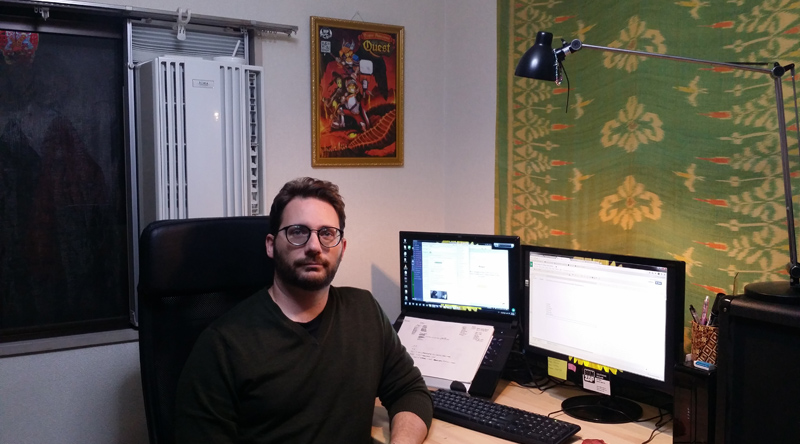
Similarly, I minimize digital distractions. Nothing on my computer makes noise. No application has popup notifications turned on. I take regular short breaks between tasks to check internal company chat groups, Facebook, Reddit, etc., but I never let these programs notify me or pull me away from my current task unless someone specifically summons me by name. Any decent internal chat program will let you set up notifications this way, and it’s critical. Even my phone has the ringer turned off, and it’s in another room. When I am working, that time is mine, and short of some major emergency, I don’t allow interruptions
I schedule ruthlessly. If you want a meeting with me, it gets scheduled. Want to exercise regularly? Schedule. Time with the family? Schedule. I do “date night” once a week with my wife. That’s on the schedule. I go to guitar lessons with my daughter. That’s on the schedule. Think of your schedule like armor protecting you from the people who want to take time from you. You want to talk to me for 2 hours? Sorry, I only have 30 minutes for you in my schedule. Talk faster. You’d be amazed at how much someone can cram into 10 minutes when you only give them 10 minutes.
I avoid “regular meetings” like the plague. If you schedule a regular meeting, you will likely have to make up things to fill it with. Screw that. Treat meetings as evil necromantic spells: every minute you give to them is sucked from your soul. When they are absolutely necessary, I bring a list of what I want to achieve and I only bring the people who need to be there. It’s rare you really need more than 3 people in a meeting – better to have smaller meetings, write notes, and disperse them to the people who just need the info and aren’t actively contributing to the content. Forget big collaboration meetings. The science is clear: collaboration breeds mediocrity. Divy up the work, let people go do, and save the meetings for figuring out how it all works together and what to do next. This is how creative people thrive.
I hire competent people and let them do their jobs. Nothing is a bigger waste of time than hiring someone to do a thing, and then doing it for them. This is a critical management skill, and it takes an adjustment of the mind to do well. Specifically, you have to change your thinking from “Is this what I wanted?” to “Is this good?” The reason you hire experts is because they are better at things than you are. So assume that they will give you something different, and probably better, than your expectation. Back off, look at it objectively, and if it does the job, pull your ego out of the equation and let it be. If you find that you can’t do that because you don’t trust or believe in the work someone is doing, replace them.
Good enough is good enough. I’ve been called “relentlessly Pareto”. I take that as a compliment. I only polish when it matters. The rest I let be. If you see me chatting with the team, my text is full of typos. They know what I mean. This isn’t getting published. I let it be. Our design documents are loose, rough, and produced fast. Our prototypes are ugly. When I give feedback, I take screenshots and scribble on them with the pen in the Windows Snipping Tool. It’s ugly, but the team gets it. Better they get the info ugly now than pretty tomorrow. If it’s not going in front of a customer, it’s only as pretty as it needs to be to be understood.
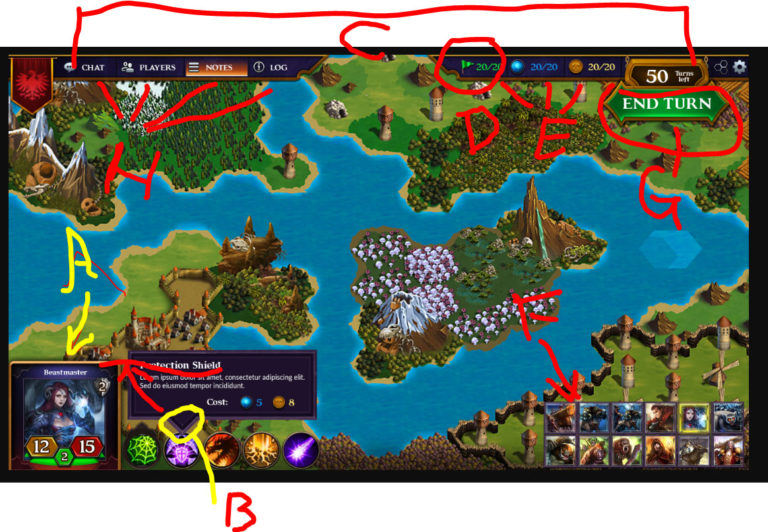
I don’t do email. Email is where information goes to die. If you are writing emails that require more than a few sentences to notify someone of something, you’re doing it wrong. That information needs to be put in a living document somewhere and shared. If I need to talk, I set up a quick call, we talk, I make notes, post them where they can be easily referenced later (we use Basecamp) and that’s referenced on our chat system (we use HipChat). If you need to say something more than a few sentences, document it, text, or call.
I do one thing completely before I do the next. Half of any serious creative task is just figuring out what you need to do, unpacking the details, and then banging them all together into something. If you are constantly shifting from task to task, you’re constantly redoing all of that preparation work, over and over. Stop that. Pick a thing. Do it. Bang on it till it’s done. Then put it out of your mind and move on. Half-done tasks pull at your attention and energy and make everything else you do more irritating and stressful. Clear your mind of these distractions by doing, completing, and moving on.
Sometimes, all of this breaks down, and I am seriously unproductive. It happens. When it does, I get up and walk away. Take a walk. Go to the gym and swim. Take a bike ride. Read a book. There are no bonus points for the number of hours you spend at a desk. If you find that you’ve been at a desk for 30 minutes or more, and have achieved nothing, step away. Recombobulate. Come back fresh. If you don’t, you’re going to just screw around looking at Facebook or YouTube or doing easy busywork anyway. Once you start down that road, you’re gone for an hour or more. Own that time. Make it yours. Shove something else you want or need to do into it.
I have one last, super specific tip: Every night, my last task is to write down the three things I will do tomorrow. I do this on a piece of scrap paper, and lay it on my keyboard. When I wake up and start in the morning, it’s there. Waiting for me. I don’t check email. I don’t do Facebook. I start with item one on the list and start my day. Until that list is done, my day is not over. When it’s done and my scheduled meetings are complete, I can call the day a success, and move on to stuff that I want to do – be that work related or not. This creates a sense of purpose that starts me every day, completion that helps me feel good at the end of the day, and excitement for what I am going to do tomorrow.
That’s largely it. Of course, I don’t keep to these rules 100%. Some days I keep closer to my regimen than others. But I have found that the closer that I keep to this life plan, the happier I am, the more I get done, and the better I feel about myself. Hope it helps.
Game dev is a process of continuous iteration, so we have been revamping some of the stuff you saw last week.
Here are the highlights from today’s stream!
We talk about the limiting factors to prevent the problem of steamrolling in strategy games. Usually resources are low during early game, but later on as you build and capture more structures, the amount of resources you acquire each turn increases, making it easy to do almost any action to overpower your opponents (or alternatively, making it hard to defeat anyone because everyone has close to an infinite amount of resources) - making it less fun for everyone.
For Last Regiment, we are adding resources such as gold and mana, restricting powers to specific units, limiting the number of control points, and adding unit cooldowns.
We also have a brand new main screen! Still being made, but what do you think of it so far?
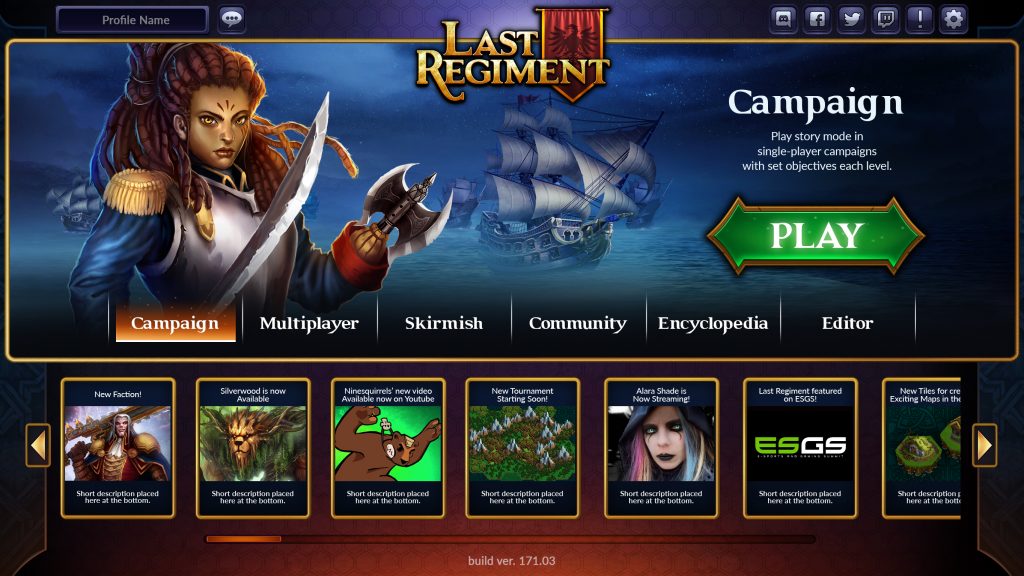
We describe in it detail in the second video: Youtu.be.
The banner and description would change depending on the menu selected. We’ve also added a section below to announce updates, livestreams, and other news. This section will be replacing the annoying pop-up notifications that we had in Legends of Callasia. We’ve also added icons linking to some of our social media pages on the upper right corner, while the full list would be available in the Community menu.
The next day was spent working with a designer, two coders, and a bunch of artists on improving our editor. Specifically the editor that allows us to build the hexes that go into the game.
Because we’re hoping to ship with an editor, we have sort of broken building maps into 2 steps:
1. Build the building blocks the game is made of – such as the Hexes in the map, the Structures you put on it, and the Units that move around. This is done with a combination of “ugly but functional” internal editors, and some big ass excel spreadsheets that churn out .lua files that define a lot of the game.
2. Put all of these together in a more user friendly, consumer-facing editor, that allows you to build maps w/o having to ever switch programs and makes sure you are working with building blocks that dont (easily) break the game.
Today’s journey (and last night’s) was to pound the “Hex-Editor” – the one that allows us to build hexes – into something that we can use properly, since it has been a bit neglected, and there was a lot of ‘build as you go”-ness to it that needed to be standardized.
It’s unsexy work, but it has to be done.
Of course, making the tool is just the first part. The *really* hard part? Making all of the data once the tool is done. But that work gets compounded terribly if the tool is not optimized – and even a step that takes 1 minute can quickly become HOURS or DAYS after you use the tol long enough – and since game development is all about iterative building, you have to expect you are building allof your maps/levels multiple times. Having a tool that does not let you do that quickly… well, the time is well spent to get it right.
Last Regiment is an upcoming fantasy-themed strategy game with single-player campaigns and simultaneous turn-based multiplayer that we are currently developing for PC (later Mac and mobile).
We had our first dev stream and it means a lot to us that many came out to watch and support us (even after a really rough start). Aside from the video update every week on the Ninesquirrels channel, we will also be writing a blog to monitor our progress and hopefully share some helpful insights with our fellow devs.
But more importantly, we are doing this because of the experience we had during our Early Access for our first strategy game, Legends of Callasia. We had so many great responses from our early adopters, so we want to replicate that and get everyone involved early on in Last Regiment.
So as we start this blog, we'd like to do a little post-mortem on LOC to explain why we are making this new game.
What we learned from Legends of Callasia
Let's start with what people loved about Legends of Callasia. It's a turn-based game that can be played in a reasonable amount of time, largely because of the simultaneous gameplay. You can play multiplayer on a desktop or a tablet with your friends in an hour and a half. Players plan and resolve their turns at the same time - it doesn't take forever!
But as with any game, there were bunch of things we thought we had to improve or wished we could have done.
- No level editor. The whole game is structured in a way that creating a map starts from a hand drawing, transformed into several layers of Photoshop, then an Excel file. It was frustrating every time someone asked if they can make their own maps - it was a cool idea that we would have liked to have done but only possible if we start over from scratch.
- The learning curve. Though people enjoyed the game, many didn't understand how things worked when they first played it. They got confused about the combat system: how armies work, what do the unit stats mean, how much is the actual damage, who gets attacked first, etc. The game had a system but we weren't able to explain it very well. The battle screen felt like a game of its own which players couldn't understand. It became a huge barrier for getting first-time players to become interested in the game, and though we had people in the community helping out the newbies, we would very much prefer if the mechanics can be easily grasped when you hopped into the game.
- The story / lore. Admittedly, the story was not something we had focused on in LOC. We had assumed our players would only want to move their armies around and not deeply care about the story - we were wrong. We went for classic fantasy characters such as humans, elves, dwarves, and the undead. People were asking us about the lore, and as we went along we tried to add story. This is another big change we plan to do in Last Regiment - to create a real world, write meaningful stories with original characters that stray a bit from the obvious fantasy tropes.
- Faction and unit structures. With each faction having only 6 units each, there were limited unit combinations or synergies that a player can come up with. You cannot use units from different factions. Once players have figured out the best way to play each faction, it shortened the lifespan of the game, even if we released new updates. There was no challenge to find new synergies that no one else has figured out.
Now these were the things we wanted to change, but unfortunately were not possible at the stage Legends of Callasia is in. Thus, the idea for Last Regiment was to take the things that people loved in LOC and address all the issues we had to make a much more improved strategy game.
The Game Reveal
Last Regiment will also be a fantasy-themed game like LOC, with story-driven single-player campaigns, and maps to play in skirmish or multiplayer with AI or human players. It would also have its built-in map editor, which is made possible now that we're using hex-based maps.
Main Menu
We are also working on an improved UI for the main menu, with a dedicated space for news and announcements, instead of the notification pop-ups in LOC which players found annoying. Note that the images in the screenshot are mostly placeholder.
Gameplay
Unlike in LOC, there won't be any lands or kingdoms to conquer, which usually takes a few turns before any action happens. We go straight to the fighting and let you control units from your pre-formed regiment and capture specific structures. Aside from the hexes, we are also implementing fog of war and will be introducing mana, which will allow you to summon new units on the map. You can have units from different factions and go into battle without going into another screen. You can watch Chris playtest the game in the video (#1.2) to get a clearer idea on how movement and combat work.
Built-in Map Editor
We're making the map editor as easy to use as possible and adding different terrains, structures, and decals in order to have that same fantasy map feel from LOC. The buildings you'll have are based on the lore and the different factions in the game. Some will also have special abilities and features - more on that in the video (#1.3).
Story and Characters
The idea for the story begins with an old, European-style world who colonized a brand new continent called Kothia, leading to incredible colonial wars. Humans from the old world brought constructs made of magic and machinery, and these encouraged the natives to fight back.
The Highborne, one of the original inhabitants of Kothia, needed magic to fight this with and so they summoned spirits of the forest, currently known as the Woodspawn. Meanwhile, the Orcs summoned the spirits of death and brought forth fungal growths that infected people and rotted out their brains. The new world becomes a desolated wasteland.
The humans went back to the old world to develop better tools and technology, which we based on modern, 1750s technology such as cannons and galleons. With these new powers, they returned to Kothia and the Reconquest began.
But back in Kothia, the people who had retreated created stronger magical factions to fight the chaos happening in their world. New units such as apes and vampiric lemurs had spawned.
The game now takes place in a world controlled by little armies and mercenary kings fighting each other. There will be units based on different factions, races, and technology. You, as the player, will be constantly putting together mercenary armies based on these warring factions.
Olivia
We introduced Olivia in our previous post, but this time we show you her full portrait. She was previously in one of the early colonial armies during the Reconquest, but after some events, she ends up being a pirate at the seaport of Saltia Ruma. The story begins with Olivia returning to Kothia and forming her own mercenary army. Yes she is a one-armed female pirate, and we're excited to tell you about her journey.
Other Questions
We also answered some of other questions from the viewers during the stream such as:
- Will there be non-unit stuff from each faction that you can take?
Answer: Yes, there will be powers and abilities, but instead of putting them in the regiment bar, we gave those to the units who can only use in specific ranges at certain positions in the map. - Can any creature activate the different buildings on the map?
Answer: We like the level of humor where ridiculous creatures can do ridiculous stuff, so yes. Also, we don't want to give any very specialized characteristics for the units, because when you implement those kinds of rules, it complicates the gameplay and it has to be explained in the game really, really well. - Will the story be on a level that I can stream during my story playthrough time and enthrall my audience?
Answer: Definitely. We're still aiming for missions that take 30 minutes to two hours, similar to LOC. The story will be made up of number of maps and it won't just be about conquering territories. It will be about moving through different hexes and telling stories based on places and characters on map.
The answers are explained in detail in the video (#1.4), so go check that out for more info. So there you have it - this is what you can expect from Last Regiment. If you have questions, just leave a comment or visit our Discord. Or you can drop by our stream next week to ask us directly.
Thanks for reading this to the very end. And we'll continue updating our blog for all things Last Regiment.


